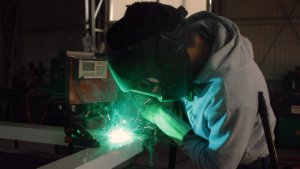If you work in Japan, you need to learn by yourself. Because nobody teaches you!
If you work in Japan, you need to learn by yourself. Because nobody teaches you!
The kaizen system of incremental improvement owes much to traditional Japanese craftsmen. No one sits down and teaches an apprentice all the techniques he needs to become a master. He starts out as minarai (student), and learns by watching. First, he is given menial jobs around the workshop. After a time, if someone calls in sick, he may get the chance to do a trivial part of the process. Later he may purchase his own tools and try things out in his spare time. He gradually gains more responsibility. At no time does the master specifically “teach” him anything. It is up to the apprentice to “steal the art,” to figure out for himself what the master is doing to get the right results. Over time, the apprentice develops a technique like the masters but also all on his own. For example, National Living Treasure Yoshida Minosuke IV is the top bunraku puppeteer of his time. Photographs of his master, Yoshida Bungoro V show his thick calluses on the fingers that manipulated the puppet’s head from the inside. Minosuke’s hands are completely smooth. Since his master’s hand was always hidden inside the puppet’s head, Minosuke has no idea how exactly Bungoro manipulated the head or how he got the calluses. Each person sees the process with a fresh eye, observing the master but learning for himself how to make the process work.
So oftentimes, Japanese seniors don’t teach or instruct their juniors how to do the job. Especially in traditional companies mimicking and stealing techniques from their seniors are sometimes the only way to learn. It sounds preposterous, but it still happens. Please take that in mind.
- Categories
- Work in Japan: Japan Biz Cultural Words and 未分類
- Tags
- shokunin


